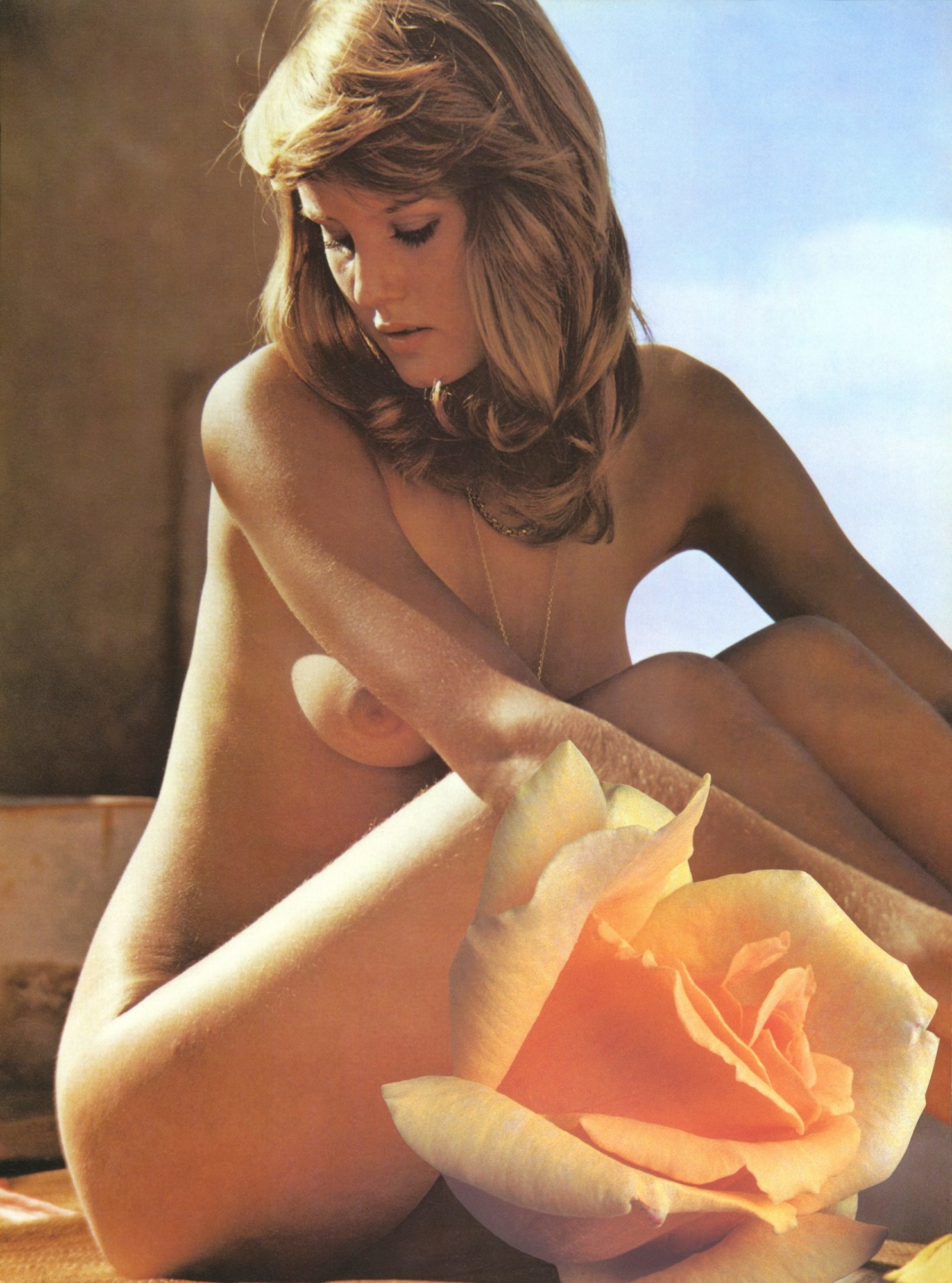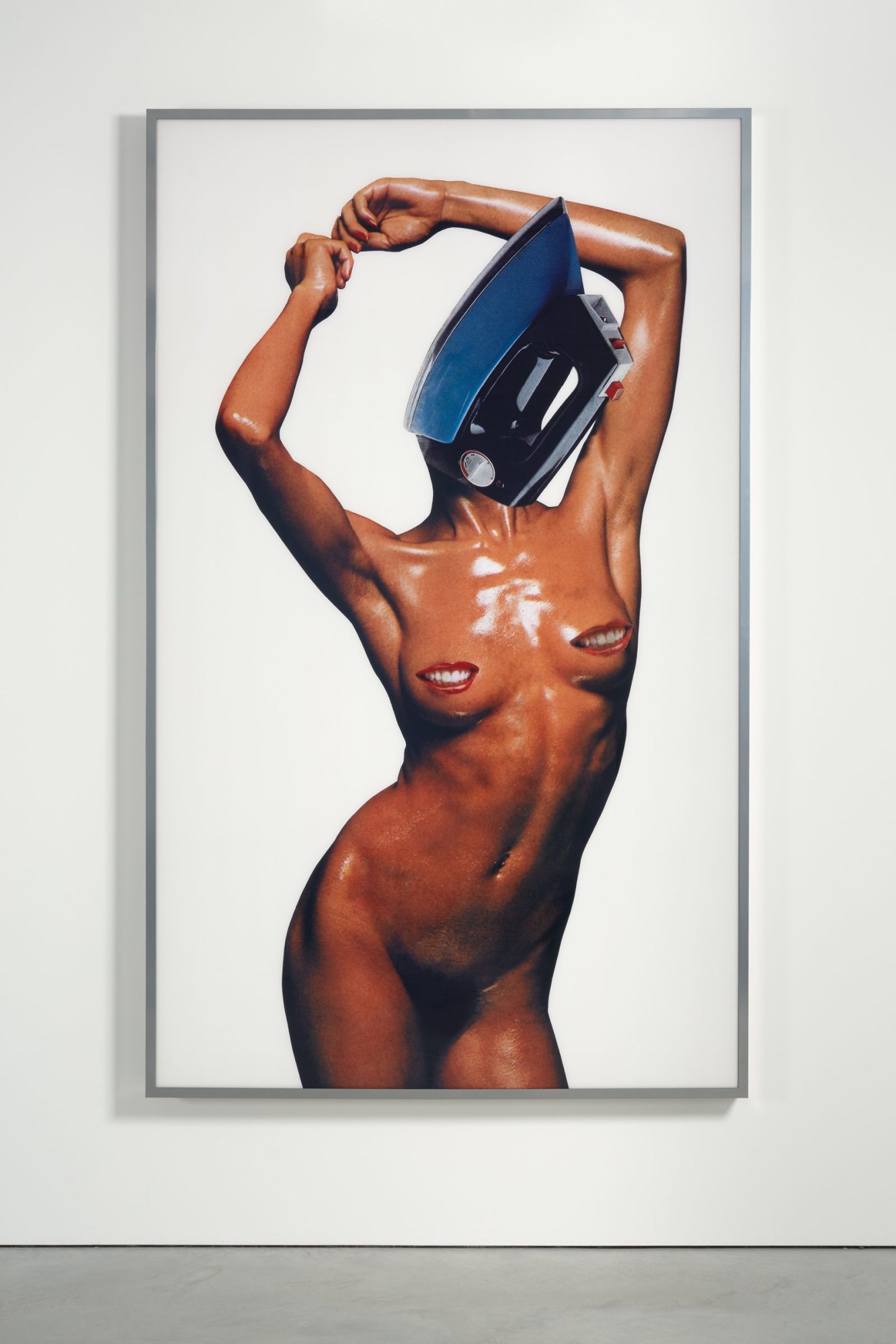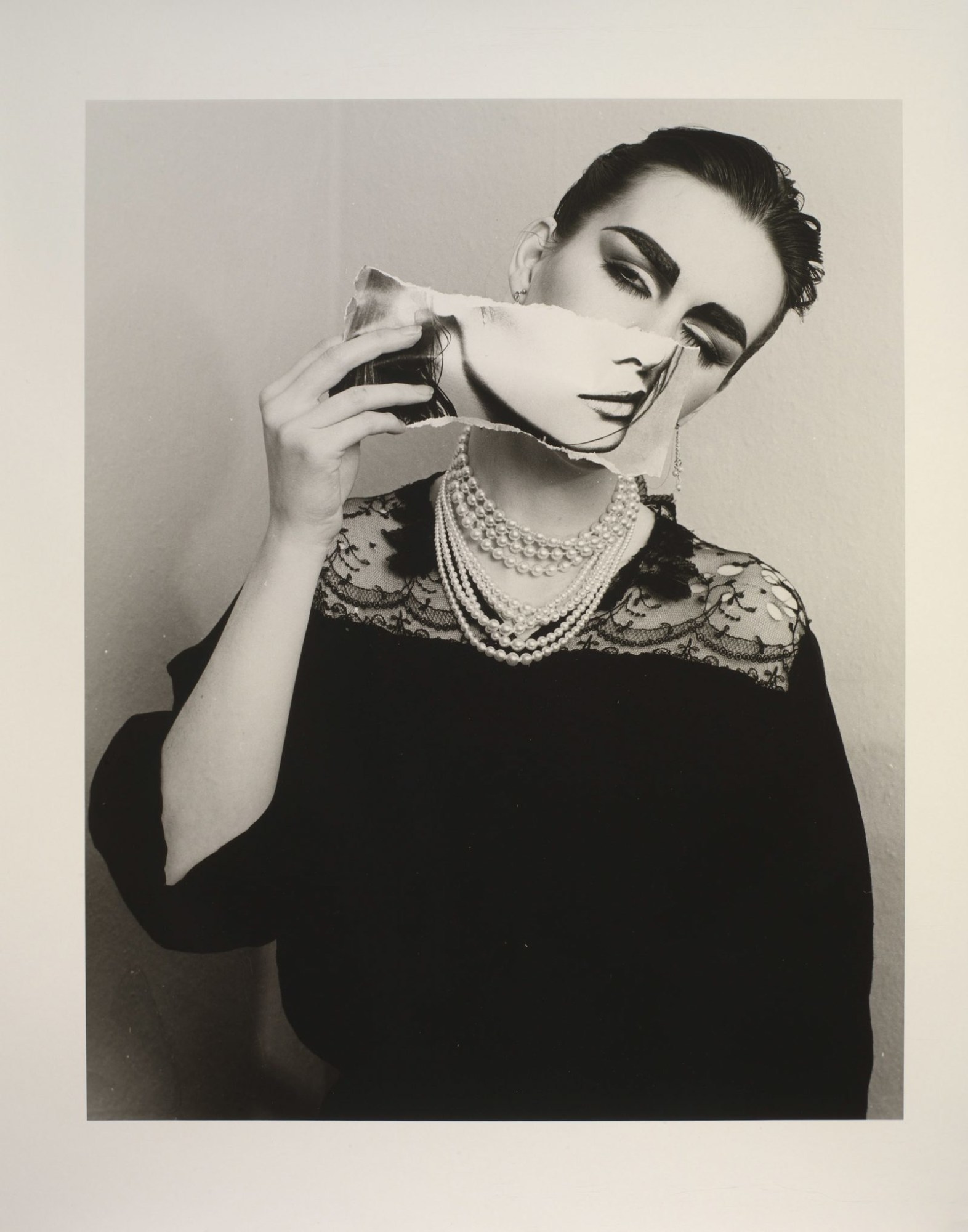You’ve definitely seen work inspired by Linder Sterling, even if you don’t know it. To wit: Lady Gaga’s meat dress (Linder wore one in 1982, in Manchester’s Hacienda in a performance with her post-punk group Ludus). As part of Manchester’s burgeoning punk and post-punk scenes, Linder produced some of the enduring images of the time: the Buzzcocks naked lady with a domestic iron for a head on the cover of Orgasm Addict; a naked lady riding a lipstick with a cassette head (naked ladies were a recurring theme: Linder sourced her images from Playboy magazines). Moving away from photomontage, Linder’s work has moved into performance art, often incorporating film, rugs, print, conceptual dance and photography, and invoking mysticism, divinity, outsiderdom and ecstatic states. Her latest piece, a ballet called Children of the Mantic Stain, where seven dancers wear Christopher Shannon sportswear, and the eighth is a large rug, explores depictions of femininity and is inspired by the writings of a Surrealist artist.
Hi Linder! You mentioned that you had wanted to work with perfumes to impregnate the rug on which your ballet, Children of the Mantic Stain, takes place. What was the idea behind this? How would it add to the performance and the experience for the audience?
Within the Children of the Mantic Stain ballet, the hand tufted carpet not only acts as a “soft” stage for the dancers, but the carpet also unfurls and moves as one with the dancers as they dance. The word ‘mantic’ means “oracular and prophetic” – I wanted to create a mantic perfume for the ballet, a scent that was the olfactory equivalent of a fortune teller’s crystal ball, triggering glimpses of past and future lives. The ballet is always a very intimate affair, it never takes place within a proscenium arch, the dancers and their mantic carpet are only inches away from the audience at any given time. This means that with a perfumed rug, both the dancers and the audience would have been able to inhale the hallucinatory scent, very much at odds with the twenty first century perfumes around them.
Brand new carpet has a very particular signature smell, doesn’t it? How would you work that into the performance?
New carpet has a very distinct scent all of its own. I wanted to work with the natural odour of the wool as the base note for a perfume, introducing top notes of the flora that would have grown wherever the sheep had once roamed. I then wanted to skew this organic equation by introducing synthetic molecules of contemporary body sprays worn by adolescent boys, as if something untoward had happened on the carpet at 2.00am when no one was looking.

Fragrance is – and by all means correct me if I am wrong – a medium that seems to be largely ignored by artists, why do you feel this is?
If we think of the five senses that we’re hopefully born with i.e. taste, sight, smell, touch and hearing, I think that it’s fair to say we live in a culture that prioritises the eye over the ear, nose, tongue and skin. We are bombarded by visual imagery and on a good day I try to reverse that sensual hierarchy, preferring to listen to the world around me and to inhale its scents. Recent studies have shown that we humans are capable of detecting over a trillion olfactory stimuli – that’s very impressive. Both scientists and artists are experimenting with perfumes in very innovative ways; CMD Concept in the Netherlands have created four perfumes in their Famous Deaths series; you have to lie in a closed silver metal box to experience the imagined soundtrack and scents of the last moments of the lives of Princess Diana, JF Kennedy, Moamer Kadhafi and Whitney Houston. It’s genius.
Do you feel that in a visual sense, the present is less stimulating than the past?
The times that we live in are so densely packed with visual and sonic imagery, our olfactory bulbs get quite a workout walking down any high street too. I find it all too much sometimes and I have to run away and stare at the clouds to reset my frontal cortex. We have access to unlimited imagery online and I don’t know if this leads to some sort of bingeing of the optical nerve. If there is a binge, then do how do we spew out the unwanted contents of all the images that we see each day? Maybe the images slip down into the subconscious and stay there forever? Will we all have terrible nightmares in decades to come when we finally process all that we have seen? We need to invent a process that’s the psychological equivalent of a Stain Devil – but maybe the yogis already have though?
Do you think there is still space for people to rebel, say, on Instagram, or do you think that the psychology of the approval culture, the need for affirmation, is now so strong that we’re basically up the creek without a paddle?
In 1978, I published The Secret Public fanzine with the writer Jon Savage. It consisted purely of photomontage and it was an ode to the virtues of secrecy. Now, it seems we want to have it both ways. We want the world to know what we had for breakfast, chia seeds and all via Instagram, but we also have to work so much harder then at concealing the aspects of self that can’t be enhanced by a “Gingham” filter. Scientists have proved that the reward centres of the brain light up with every ‘like’ that we receive but I know of seventeen-year-olds with 10k followers on Instagram yet zero social lives as a result of severe social anxiety. At the other end of the spectrum you have the tragic murder of Qandeel Baloch in Pakistan, seemingly provoked by Baloch’s use of social media. How that will impact upon other women in Pakistan who use social media, we don’t yet know. Rebellion can take many forms and abstinence from social media may become one of them, then other “spaces” may open up for protest and yield a far greater harvest.
You are famously the originator of the meat dress – did it bug you that Lady Gaga didn’t acknowledge your influence?
Whenever I make art, I always have a mythical teenage boy from Hull in my mind and a sixty-year-old woman living in suburban Pacoima, CA. I always hope that they somehow see the work that I make and that it then gives them a way into culture and provides the seedlings of ideas as to how they can make creative inroads into the world that they see around them. I try to leave a paper trail (literally) so that any 16 or 60-year-old can trace my journey and hopefully find clues that could affect the steer of theirs. I’m always disappointed by the myth, historically adopted by male artists, that inspiration strikes fully formed without any influence from others upon the artist. Lady Gaga has systematically taken ideas from many artists without any form of acknowledgement, which is no big deal for the artist, it happens to us all the time. It’s more irksome that the teenage boy in Hull could be left with the sheen of spectacle but zero substance and the woman in Pacoima wonders why would a woman want to wear a dress made out of meat anyway? You can grab a headline through stealing ideas and neatly sidestep any chance of a debate about the meat industry and the commodification of the female body as you do so. It makes for an easy life.

Linder Dramas, Fields and Metaphors 2012 duratrans on lightbox 103.5 x 107.5 cm, 40 3/4 x 42 3/8 ins Edition 2 of 3 + 1 AP Courtesy Stuart Shave/Modern Art, London
Do you personally still feel curious?
Yes! My mother used to warn that curiosity killed the cat so it always seemed that there would be a price to pay for my curiosity one day but thankfully that’s yet to happen. I was always extremely curious about the status quo, especially around the age of sixteen when I began to venture out into the big wide world. Luckily I found the right books at the right time and the writers of the second wave of feminism provided me with the equivalent of a Rough Guide to Life and satisfied my curiosity about construction of the world around me. Those writers also encouraged a life time of enquiry, as I sang with my group Ludus in 1981, “I’m the one that’s asking questions, I’m the one who will not play your game” and I’m still curious and I’m still waiting for the right answers.
What message do you want to leave behind?
Always make a clean cut. I use a Swann Morton surgeon’s scalpel to make my cuts as accurate as possible when I’m making photomontage but making a clean cut works metaphorically too.
Do you still feel punk?
Even during punk I didn’t feel like a punk, no one that I knew did either. The name was an Americanism, I think that only Jon Savage can work out the true etymology of why that name was given to teenagers who wore too much eyeliner and who liberated the safety pin from its traditional role of holding babies nappies together to holding dresses made of bin bags together. Maybe it would help if we think of punk now as a verb and not a noun?
Do you think someone could be a punk in 2016?
It’s an impossibility. Punk was an oppositional stance adopted within a culture that was worlds apart from the culture in which we now live. If you look at photographs of punks from 1976, it’s the Britain that stands behind them that’s sculpting their revolt. Punk was all to do with an accelerated sense of the new versus the soporific old world order that they saw around them. But be careful what you ask for – we now live in a culture of such short attention span that newness and novelty reign. Culture is finally aerosolic, working in much the same way as a perfume does in order to affect our moods. If so, let’s leave the last words to CMD Concept, ‘Smell is a time machine that travels two ways: to the past and to the future.’ I’ll happily travel to either.

Credits
Text Hanna Hanra
